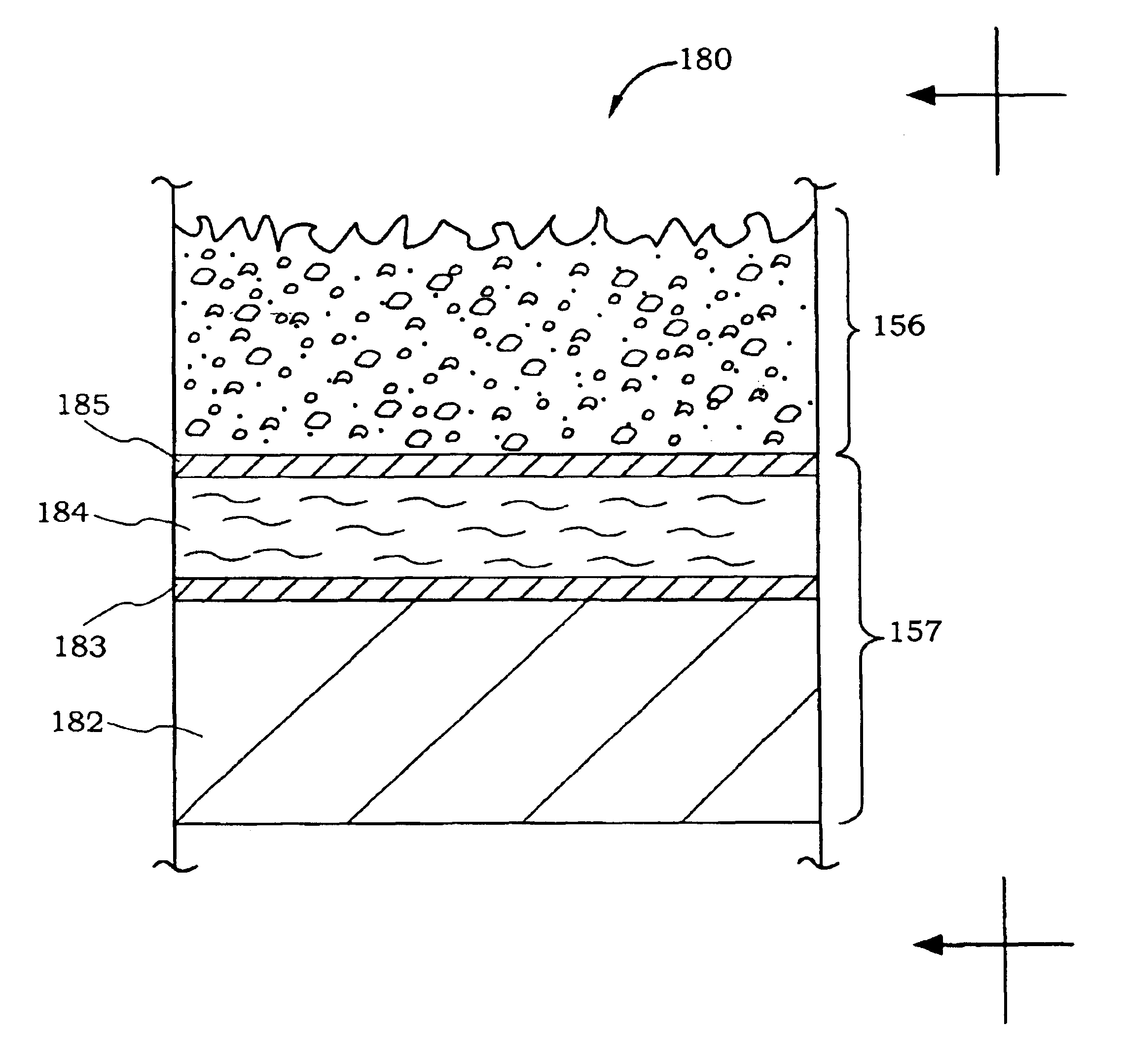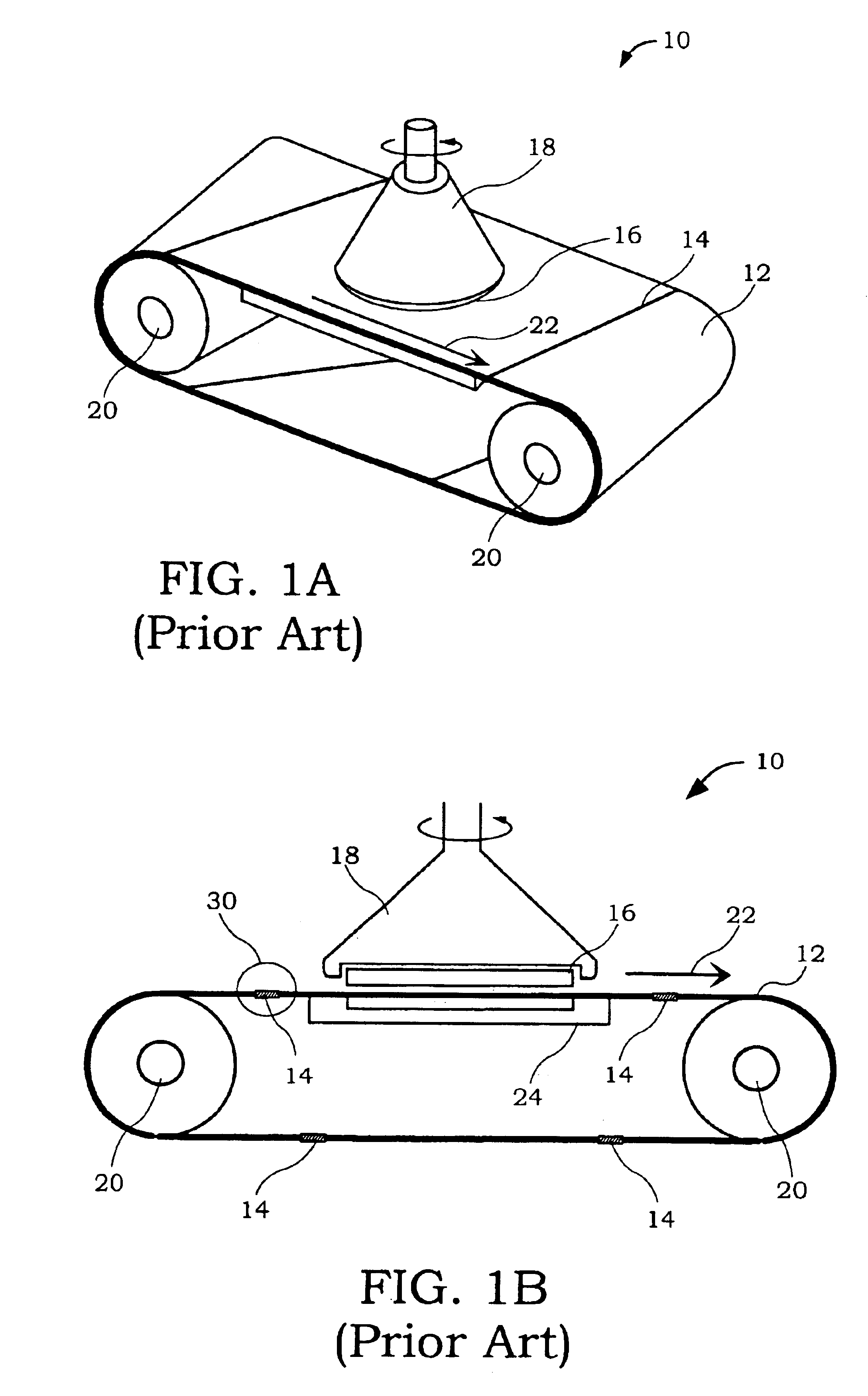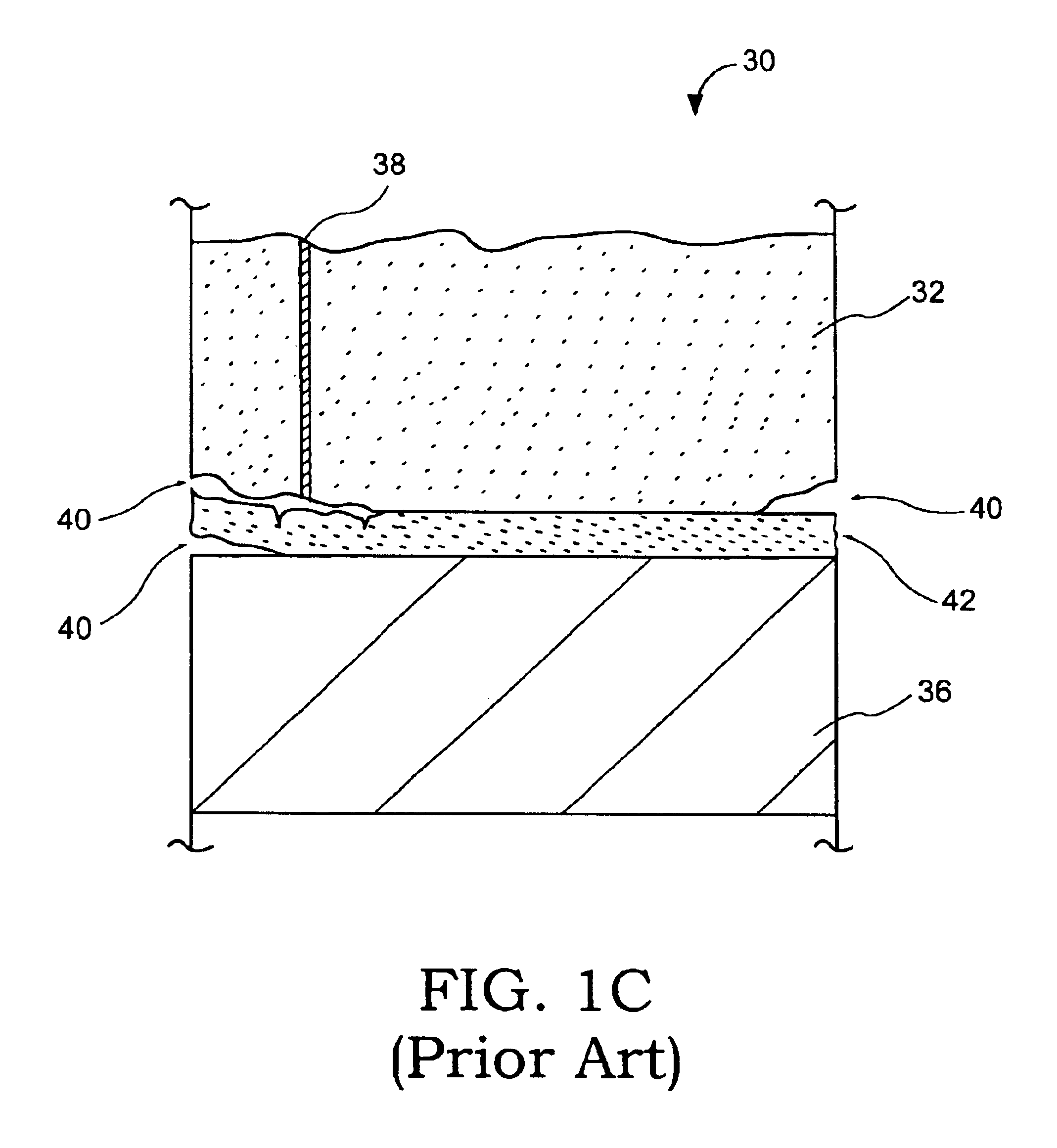Methods for making reinforced wafer polishing pads and apparatuses implementing the same
a technology of reinforced wafers and polishing pads, which is applied in the direction of manufacturing tools, grinding devices, lapping machines, etc., can solve the problems of prior art designs having serious delamination problems, the delamination of the polishing belt is significantly more difficult, and the manufacturing of further metallization layers becomes substantially more difficult, so as to achieve more repeatability, improve efficiency and effective polishing operations
- Summary
- Abstract
- Description
- Claims
- Application Information
AI Technical Summary
Benefits of technology
Problems solved by technology
Method used
Image
Examples
Embodiment Construction
[0042]An invention for a method of making a polishing pad structure and an apparatus using the same is disclosed. In the following description, numerous specific details are set forth in order to provide a thorough understanding of the present invention. It will be understood, however, by one of ordinary skill in the art, that the present invention may be practiced without some or all of these specific details. In other instances, well known process operations have not been described in detail in order not to unnecessarily obscure the present invention.
[0043]In general terms, the present invention is directed toward a polishing pad structure and method for making the structure. The polishing pad structure includes a supporting layer, a cushioning layer, and a pad layer. In a preferred embodiment, the pad layer is designed and made as a contiguous and seamless unit, and is preferably adhered to the cushioning layer to enable more consistent and effective wafer polishing during CMP op...
PUM
 Login to View More
Login to View More Abstract
Description
Claims
Application Information
 Login to View More
Login to View More - R&D
- Intellectual Property
- Life Sciences
- Materials
- Tech Scout
- Unparalleled Data Quality
- Higher Quality Content
- 60% Fewer Hallucinations
Browse by: Latest US Patents, China's latest patents, Technical Efficacy Thesaurus, Application Domain, Technology Topic, Popular Technical Reports.
© 2025 PatSnap. All rights reserved.Legal|Privacy policy|Modern Slavery Act Transparency Statement|Sitemap|About US| Contact US: help@patsnap.com



